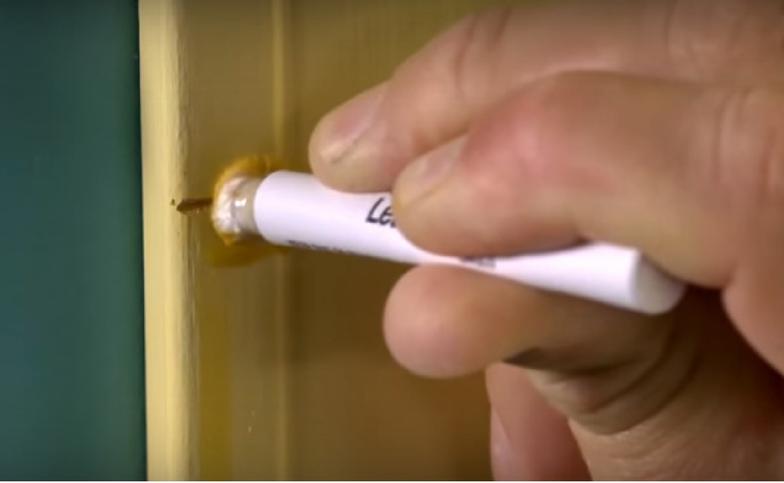Common Misconceptions About Lead Poisoning and Prevention
When Was Lead Paint Banned?
After World War II, the price of lead increased and alternatives to lead additives were developed. Lead paint was always considered “the good stuff” and was more expensive and therefore was used sparingly after the 1940s.
The use of lead paint began to be phased out in the 1950s and was typically reserved for exterior and high moisture/high friction applications such as window jambs and wooden stair tread.
Tri-Tech has tested houses as old as 1951 as have found no lead-based paint on the interior. Lead-based paint was typically used more commonly in the 1940s-1960s in higher-end housing. More on the historical usage of lead in paint here. More on the historical usage of lead in plumbing systems here.
Making property "lead-safe" is difficult and expensive
Making a house lead-safe is “easy” and generally consistent with basic maintenance and housekeeping.
Except for paint on walls and ceilings and window sills/trim, most interior and exterior lead paint is removed or covered up as a home is renovated.
Stabilizing and repairing painted surfaces is generally easy if the cause of the damage is corrected (e.g. water damage/friction etc.).
Lead paint dust is heavy and is therefore is readily cleaned.
It is important to clean up paint dust quickly before it is ground into the more dangerous form of invisible fine dust by foot traffic or poor-quality vacuums.
Generally, there is no reason to remove rather than to repair/renovate or cover lead paint except for friction surfaces such as door and window jambs. Installing new windows is typically the biggest and most costly step to making an interior lead-safe
Chemical swab brands that have been evaluated and approved by the USEPA are actually rather accurate when used properly.
Some in my profession would seek to discredit a $1 swab when compared to a $20,000 testing instrument.
However, in the experience of Tri-Tech, approved lead swabs are reasonably accurate for their intended purpose and the degree that the swab changes color is a good gauge of relative lead content.
Children eating paint chips is a major cause of lead poisoning…
In the 1970s and early 1980s, it was widely believed that direct ingestion was a major cause because of problems of child hunger and poverty and the fact that lead salts in paint have a slightly sweet taste.
However, we have learned since then that it is actually the fine lead dust ingestion and inhalation that causes a large majority of lead exposures.
In addition, the latex and other paints that would now cover lead-based paint have a bitter taste and therefore direct ingestion of paint chips is very rare to this day.
However, it is possible for young children to chew on window sills, bed rails and other painted surfaces when they are teething.
Tri-Tech is licensed by the State of Michigan to conduct Elevated Blood Lead investigations.
Chemical swabs used by renovators and homeowners are inaccurate
Have any questions?
We're happy to help!
A homeowner or renovator doesn’t need an exact numerical reading of lead content. In general, the darker the color, the more lead there is. Therefore, a swab tells you that the darker the color, the more caution and dust controls need to be used.
Homes built prior to 1978 are likely to contain lead paint
This is only partially true, depending on the context. While homes built up to 1978 could have been legally finished with lead-based paint, in reality lead paint usage started to diminish in the 1950s, in part because of the cost and then later because of the health concerns. Its unusual to find lead in the interior of houses built in the 1960s and 1970s except where paint was used for specialized purposes where a more expensive and durable paint was desirable (e.g. wood stair tread).
Homes built prior to 1940 are more likely to contain lead paint than those built later
Again, this was only partially true and can be somewhat dependent on the market. In the City of Detroit market, we see the heaviest levels of lead-based paint in homes constructed between 1943 and 1946. The reason for this appears to be that our manufacturing capacity was significantly ramped up as part of the war effort (World War II). Towards the end and following the war, there was significant manufacturing capacity and surpluses for lead paint due its use on ships, tanks, planes and other military equipment. By the end of the 1940s, we see a big drop off in the use of lead paint on the interior. The houses I have tested where nearly everything is lead paint were constructed in 1943-1945.
Lead Paint is commonly found on walls
Although commonly cited, this is clearly false. Lead paint was much more likely to be used on wood components such as windows, casings and stair tread. Walls are one of the least likely places to find lead paint, particularly on plaster, drywall and basement foundation walls. Wooden partition walls, such as found in basements are the most likely place for lead paint to be found on walls. Occasionally walls are found to be painted with LBP that appears due to a specialized application such a moisture-resistant paint in a bathroom or perhaps a room where a lead-pigmented paint was used. Its very rare to find lead paint on a basement wall. More commonly, small areas of basement walls are found to be hot for lead due to a water-proofing or patching compound applied.
Stronger Regulation and More Stringent Lead Standards Will Reduce Lead Exposures
Not necessarily. The Laws of Unintended Consequences and Diminishing Returns applies to our business as well many others. We are approaching the point of diminishing returns where lead dust cleanup standards are within "background levels." Implementing extremely stringent standards increases costs and causes for more failing results from uncontrollable background sources of lead. Increasing costs means more money must be budgeted for each project, resulting in less housing hazard control projects being completed each year. In addition, landlords proceed more slowly with lead testing and remediation projects when they are more costly and take more time to complete. Some opt to pay the fines or risk the fines of non-compliance as a cost of doing business. Landlord "buy-in" is lost when we begin to regulate lead dust so stringently that they become responsible for other sources of lead dust other than paint in their building, other things they typically have little or no control over. Read more about Tri-Tech's critical review of these proposed new EPA standards.


